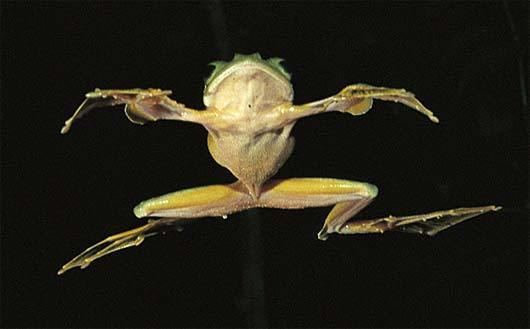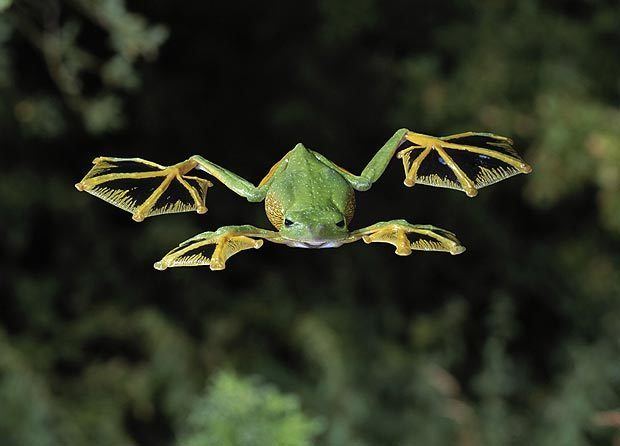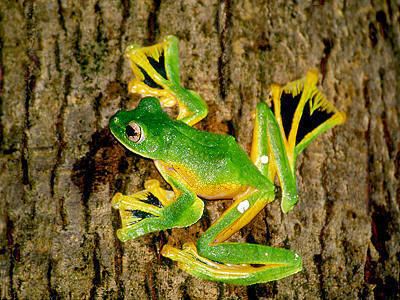 | ||
Flying frog mpg
A flying frog (also called a gliding frog) is a frog that has the ability to achieve gliding flight. That is, it can descend at an angle of less than 45° relative to the horizontal. Other (non-flying) arboreal frogs can also descend vertically, but only at angles greater than 45°, which is referred to as parachuting.

Gliding flight has evolved independently among 3,400 species of frogs from both New World (Hylidae) and Old World (Rhacophoridae) families. This parallel evolution is seen as an adaptation to their life in trees, high above the ground. Characteristics of the Old World species include "enlarged hands and feet, full webbing between all fingers and toes, lateral skin flaps on the arms and legs, and reduced weight per snout-vent length". These morphological changes contribute to the flying frog's aerodynamic abilities.

Alfred Russel Wallace made one of the earliest reports of a flying frog. The species he observed was later described by George Albert Boulenger as Rhacophorus nigropalmatus.
Flying frogs includes members of the following genera:



